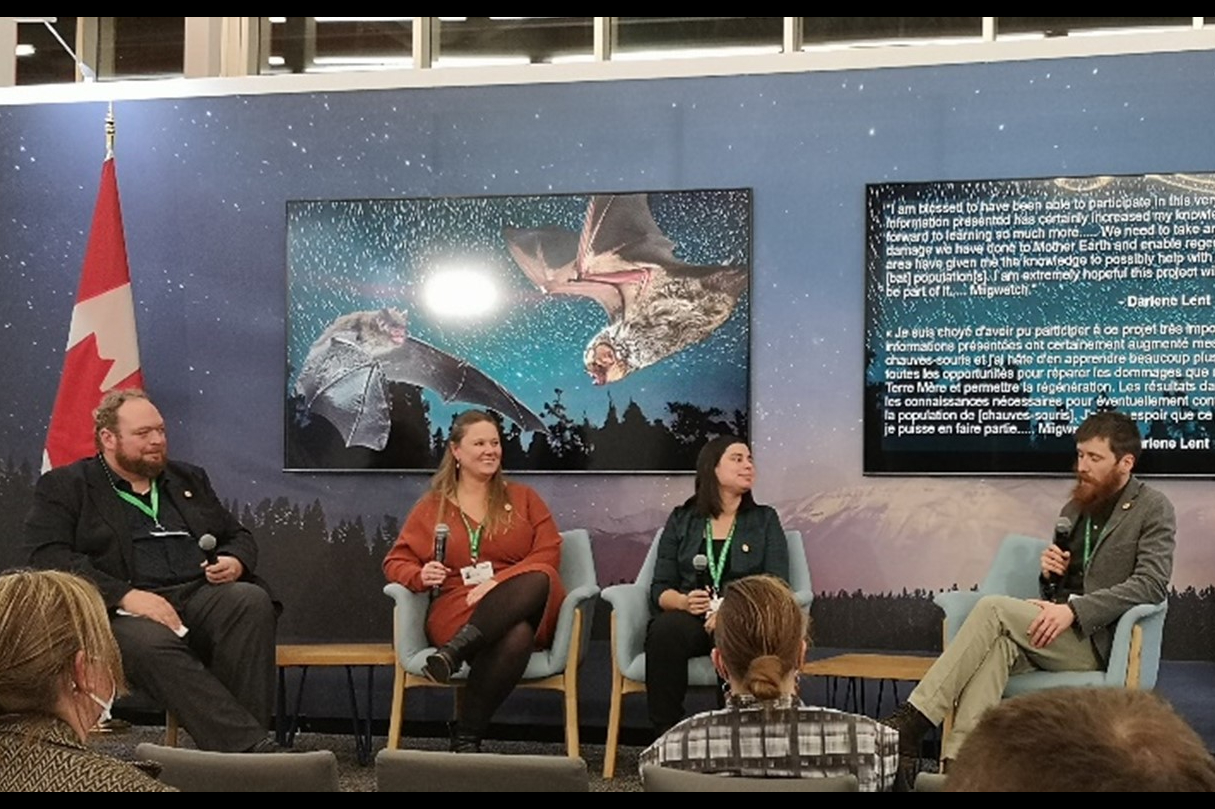It is a rare privilege to be part of a United Nations Convention. The Nuclear Waste Management Organization (NWMO), and our partners from the Toronto Zoo and Métis Nation of Ontario were honoured to be invited to the Canada Pavilion alongside the United Nations 15th Conference of the Parties (COP15). The partners shared details about their collaborative project to save and protect endangered bats in Ontario.
Hosted by Environment and Climate Change Canada, the Canada Pavilion showcases Canadian action and leadership on biodiversity conservation. It also amplifies the voices of underrepresented groups, particularly Indigenous peoples, women and youth.
In our collaborative Native Bat Conservation Program, we set out to understand current bat population levels in a variety of locations. With this knowledge, we can preserve appropriate habitat and help people avoid actions that are harmful to bats. The program has generated a significant volume of high-quality data that can be used by the wider scientific and conservation communities to implement meaningful conservation measures for bats.
“Protecting people and the environment is central to our work, and this project is a great example of how we worked collaboratively with the community to align with Indigenous Knowledge and apply best available western science research practices,” said Melissa Mayhew, Senior Environmental Scientist at the NWMO, who took part in a panel discussion at the Canada Pavilion. “Working together, we’ve built amazing new relationships with people living in the South Bruce region who participated in the community science and outreach elements of this project.”
“The Native Bat Conservation Program advances the national recovery strategy for bats by gathering data on bat populations and spreading the message that bats are threatened, not threatening,” said Toby Thorne, Native Bat Conservation Program Coordinator at the Toronto Zoo. “Bats are important contributors to biodiversity and play an essential role in helping to control pests, disperse seeds and pollinate plants.”
More than 30 volunteers in the wider South Bruce region were part of the research project. Members of the Métis Nation of Ontario Georgian Bay Traditional Territory Community (MNO) collaborated with professional scientists to collect and analyze data related to local bat populations. Together, they recorded nearly 11,000 verified bat observations using special acoustic monitoring equipment over 119 nights between mid-May and the end of September. They sampled many different habitats, including outside old buildings, in pastures and backyards, at forest edges, and near rivers and ponds.
“Bats are an important part of the biodiversity of Ontario and the ecosystem,” said Hope Hill, Consultation Advisor with the Lands, Resources and Consultation Branch of the MNO, who also took part in the COP15 panel discussion at the Canada Pavilion. “Members of our community were pleased to be able to further contribute to the protection of bats through this partnership with the NWMO and the Toronto Zoo.”
After the 2022 community field research wrapped up, the MNO hosted a volunteer appreciation event at the Wye Marsh Wildlife Centre in Midland, Ont., to share the findings with local residents and celebrate the latest collaboration between Indigenous communities and the NWMO.

